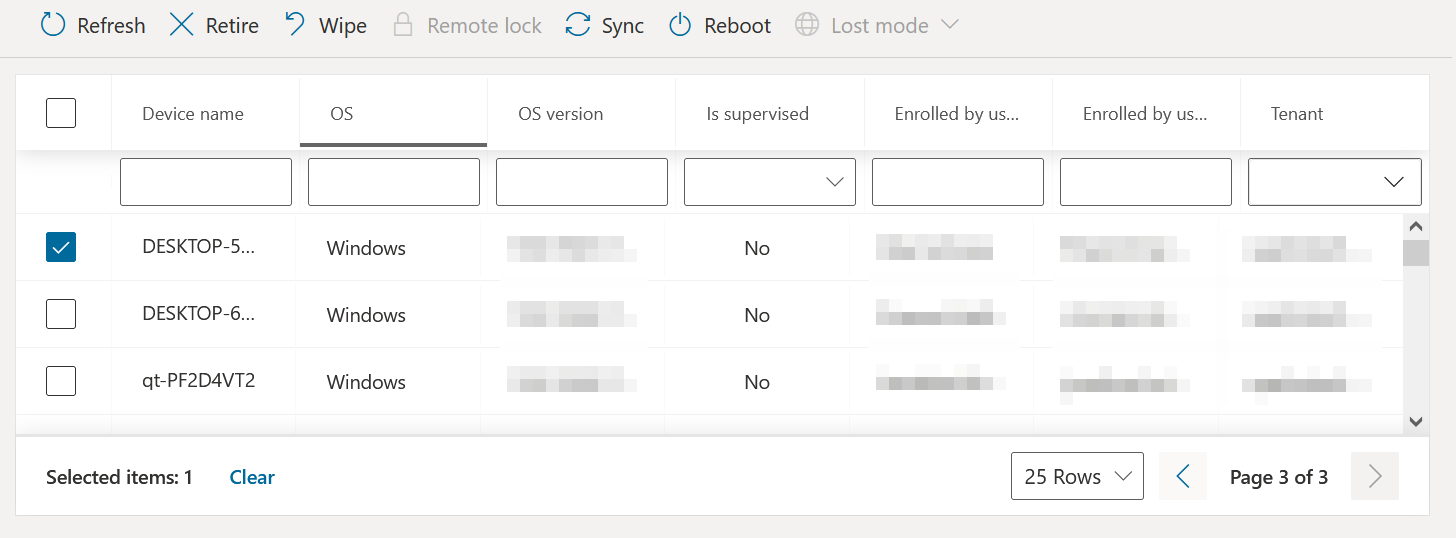Teams
On the Teams page, by going to Manage, then Teams, you can manage your Microsoft 365 Teams. Here, you will see your already created Microsoft Teams, and the groups that they are associated with. These are the icons that you will see in Teams, and what they mean:



On this page, you are also able to filter by Archived Teams, and select which tenant you would like to view. By default, the page will show all Teams, both archived and unarchived, from all tenants you have access to.
By clicking on a Team's ellipses, and clicking Detail, you will see additional information on a Team, including:
·Detail: This is information on a Team, including its description, group type, visibility, and mail and archive enablement.
·Settings: This is the list of settings applied to the Team, including member, guest and messaging permissions.
·Owners: This is a list of owners for the Team. You can add or remove owners if you have the appropriate permissions.
·Members: This is a list of members for the Team. You can add or remove members if you have the appropriate permissions.
·Channels: This is a list of channels for the Team. You can add, edit or delete channels if you have the appropriate permissions.
Clicking on the ellipses on a Team also allows you to:
·Move the Team into a different folder.
·Delete the Team.
·Create a new Teams Channel. Clicking on this will take you to a creation section, where you can enter the channel's name and description.
Clicking on the ellipses for a group allows you to:
·Create a new Teams group.
·Edit the folder to change its name and Team prefix.
·Create a new Team. More on this is below.
·Refresh the group to update its details.
How to create a new Team
Below are steps on how to create a new Team in Microsoft Teams.
1.Click on the folder ellipses and click Create Team.
2.Enter the display name for the Team.
3.Enter the Exchange alias for the Team.
4.Choose the Team's viability. The Team can be either Public or Private.
5.From the drop down menu, select the Team's owner.
6.Optionally, enter a description for the Team to give more information on its purpose.
7.Optionally, select settings for members, guests and messaging, including the choice to filter any inappropriate material.
8.Click Save.
How to create a new Channel
Below are steps on how to create a new Teams channel.
1.Click on the ellipses on the Team you would like to create the channel in, and click Create Channel.
2.Enter the display name for the Team.
3.Optionally, enter a description for the channel.
4.Click Save.
Devices
You are able to add actions to Microsoft Intune configuration policies to your user's mobile devices. For DPC users, this is helpful if you need to modify devices and applications of users you are allowed to manage. The devices screen can be found within the Nova Dashboard by clicking Manage, then Devices.
Actions include:
·Refresh: this refreshes the list of devices in the tenant.
·Retire: if the device is no longer in use, you can retire it.
·Wipe: you can remote wipe devices immediately.
·Remote Lock: you can remotely lock devices immediately.
·Sync: Sync your device to get its most up to date information.
·Reboot: instantly reboot a device.
To show more details for your device, click on its name. Here, you will find several more tabs, including:
·Detail: this gives additional information of the device, including manufacturer, model, last sync date type and encryption state.
·Owner: this gives detail on the owner of the device, including email and the tenant the user is in.
·Users: this includes a list of users assigned to the device.
·Group Membership: if the device is part of a group, they will be listed here.
Also on this Device Detail page, you have the opportunity to remove the passcode (for iOS), and reset passcode (Android 7+ versions only).
Custom PowerShell
The Custom PowerShell page shows a list of PowerShell scripts which have been added to Nova. You can also create your own scripts and run them. For more on this, go to the Quest Nova User Guide.
|
|
NOTE: Only System Administrators, Account Administrators and delegated administrators who have been given Custom PowerShell rights can access this page and perform actions with custom PowerShell. |
Policy Examples
Below are some authorization and configuration policy examples that allow delegated administrators to perform certain actions and tasks.
|
|
NOTE: Delegated administrators must have the correct permissions in the relevant authorization or configuration policy to perform the following actions. Please contact your Nova administrator if you would like to perform these tasks. |



